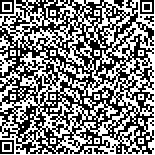| 本文已被:浏览 2642次 下载 1844次 |

码上扫一扫! |
| 腰椎L4~L5活动节段有限元模型的建立与验证 |
| 刘耀升,陈其昕,廖胜辉,唐小君,李方财,吴浩渡,余世策,LIUYao-sheng,CHENQi-xin,LIAOSheng-hui,TANGXiao-jun,LIFang-cai,WUHao-bo,YUShi-ce |
|
|
| () |
|
| 摘要: |
| 目的:采用一种新型计算机辅助设计(CAD)方法精确建立腰椎L4~L5节段三维非线性有限元模型并进行充分验证.方法:采用改良的"非种子区域分割方法"提取腰椎CT图像数据中目标区域得到二值图像,用Marching Cubes方法由二值数据生成初始表面模型.采用反映腰椎生理曲度的"最佳切割平面"从初始表面模型获得非平行的切割轮廓线并建立"分段线性子空间",后者经仿射变换到"规则子空间"快速重构腰椎曲面,最后逆变换恢复腰椎原三维空间形状特征.将表面模型所有结点的坐标数据和三角面片信息导入ANSYS进行网格划分精确建立L4~L5节段三维非线性有限元模型,并进行加载验证.结果:所构建的L4~L5活动节段有限元模型包括94 794个Solid单元,1 196个Link单元,1 170个Shell单元,768个Target单元,464个Contact单元;同时包含了几何非线性、材料非线性与接触非线性3种非线性类型.不同载荷条件下L4~L5节段有限元模型的移位/旋转角度、椎间盘内压等预测结果与文献中相同载荷条件的试验生物力学结果相符合.结论:基于先进算法建立的腰椎L4~L5节段表面模型实现了二值图像提取、腰椎曲面重构的全数字化过程,具有极佳的仿真效果. |
| 关键词: 生物力学、有限元方法、计算机辅助设计、腰椎、表面模型、验证 |
| DOI:10.3724/SP.J.1008.2006.00665 |
| 投稿时间:2005-11-05修订日期:2006-04-29 |
| 基金项目:卫生部科学研究基金重点项目(WKJ 2005-Z-046). |
|
| Development and validation of a finite element model for lumbar motion segment (L4-L5) |
| 刘耀升,陈其昕,廖胜辉,唐小君,李方财,吴浩渡,余世策,LIU Yao-sheng,CHEN Qi-xin,LIAO Sheng-hui,TANG Xiao-jun,LI Fang-cai,WU Hao-bo,YU Shi-ce |
| () |
| Abstract: |
| Objective:To develop and validate an accurate three-dimensional geometrical and mechanical finite element(FE) model of the lumbar L4-L5 segment using a new computer-aided designing (CAD) method, Methods: First, a modified "nonseed region segmentation" was done to extract the interest region in the CT image and to obtain a binary image, from which the iso-surface of vertebral body was produced by a discretized marching cubes algorithm. Second, "best cross-section planes" representing the morphologic characteristics of physiological lordosis were used for the initial iso-surface model, forming a "nonregular piecewise subspace'. This subspace and the embedded iso-surface model were subsequently transformed by local affine transforms to a "regular subspace', in which a surface mesh of high quality was generated quickly. Finally, a reverse transform procedure was employed to restore the original three-dimensional (3D) image of the lumbar surface mesh of lumbar L4-L5. All coordinate dada of nodal points and message of triangular patches of the surface model were then subjected to ANSYS for the three-dimensional FE mesh construction. An accurate 3D non-linear FE model of lumbar motion segment (L4-L5) was developed and validated against published data. Results: The constructed FE model of lumbar L4-L5 consisted of 94 794 solid elements, 1196 link elements, 1170 shell elements, 768 target elements and 464 contact elements, and included geometrical, material and contact non-linearities. The predicted results of lumbar L4-L5 segment were closely correlated with published results of experimental biomechanics in terms of axial displacement, segment rotation and intradiscal pressure under similar load condition. Conelusion: Based on advanced algorithm,this constructed surface model of L4-L5 segment is capable to perform whole digitalized binary image extraction and reconstruction of the lumbar surface with excellent simulation results |
| Key words: biomechanics finite element method computer aided design lumbar spine surface model validation |
.jpg)
.jpg)